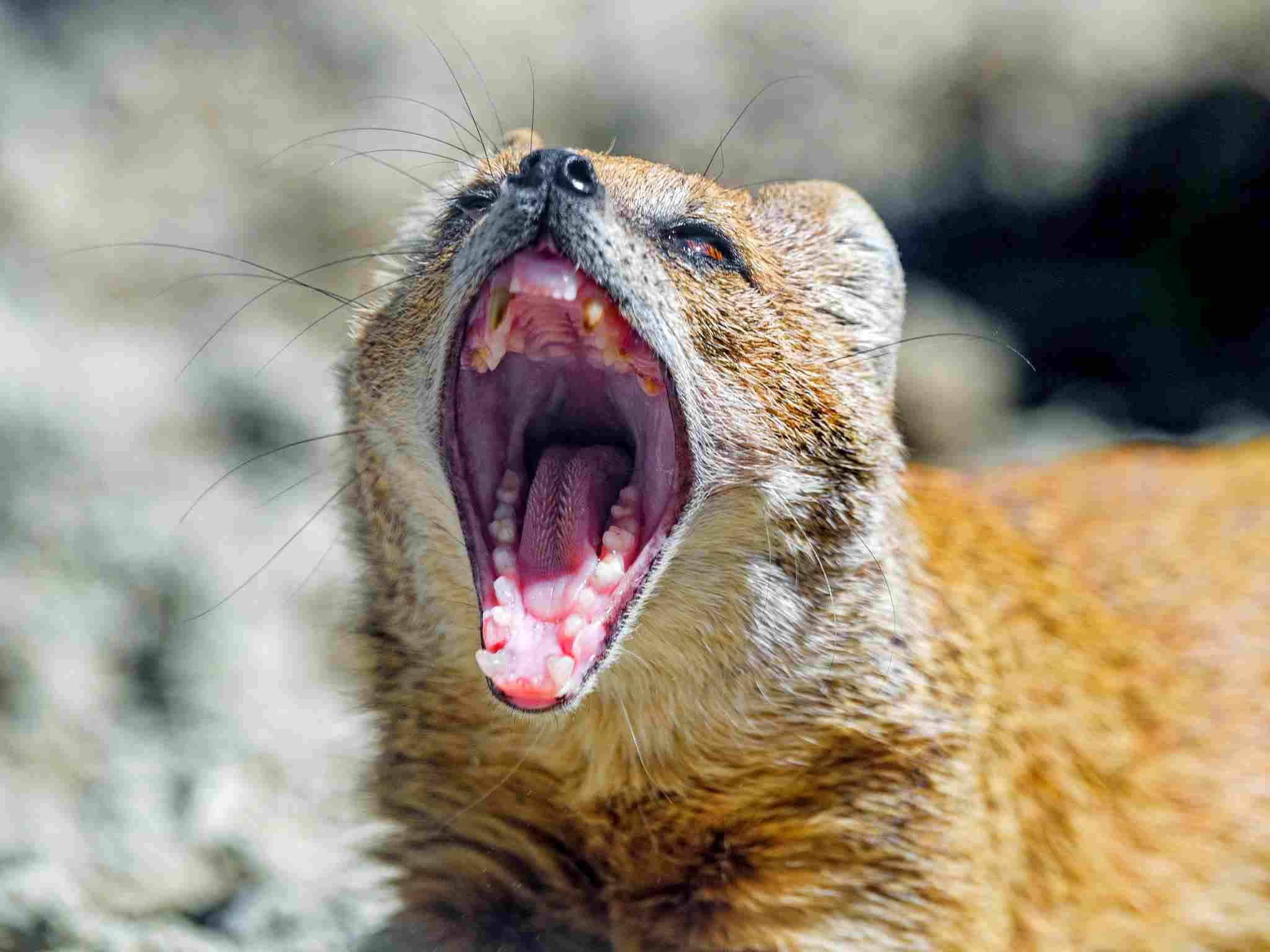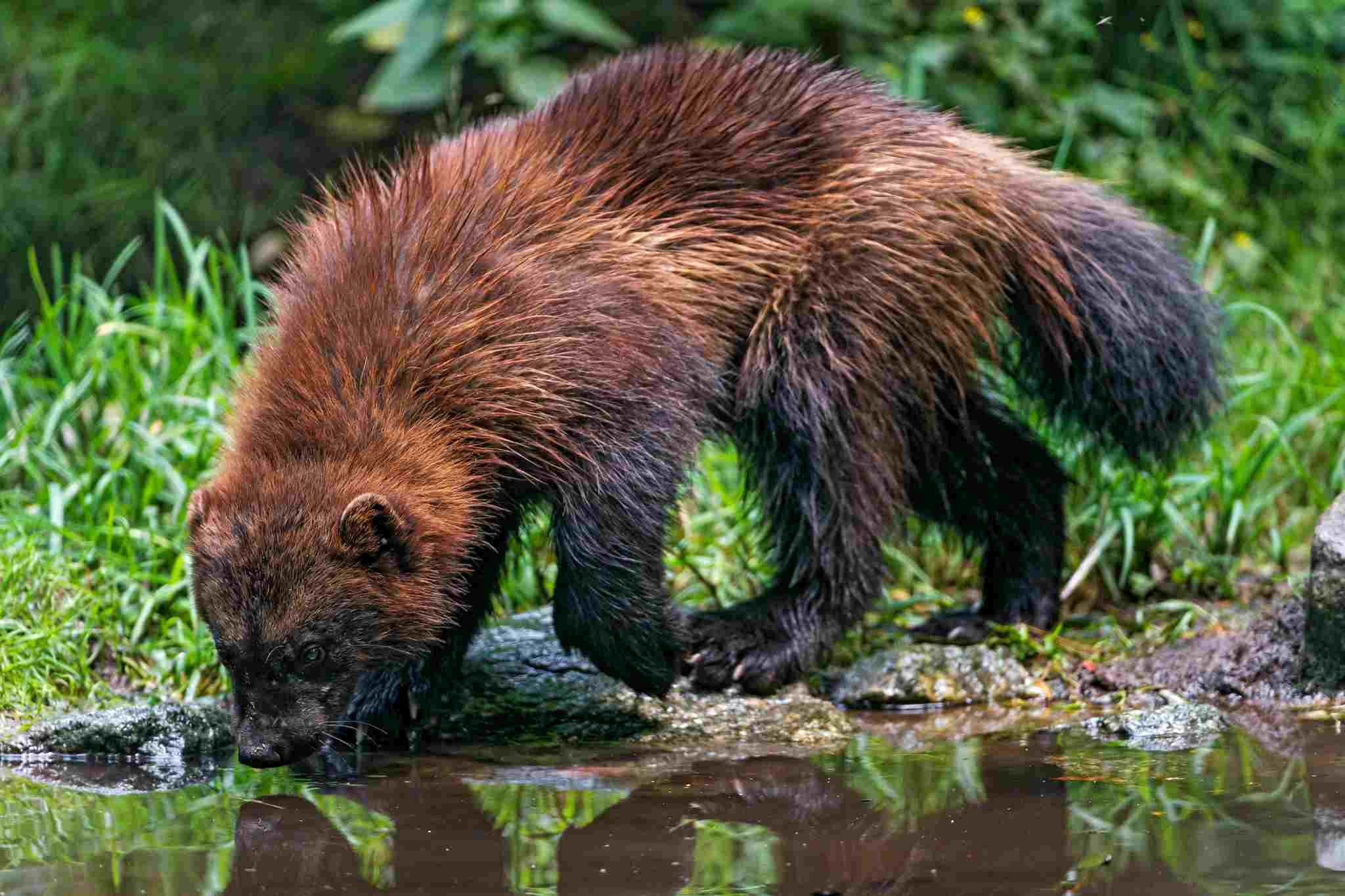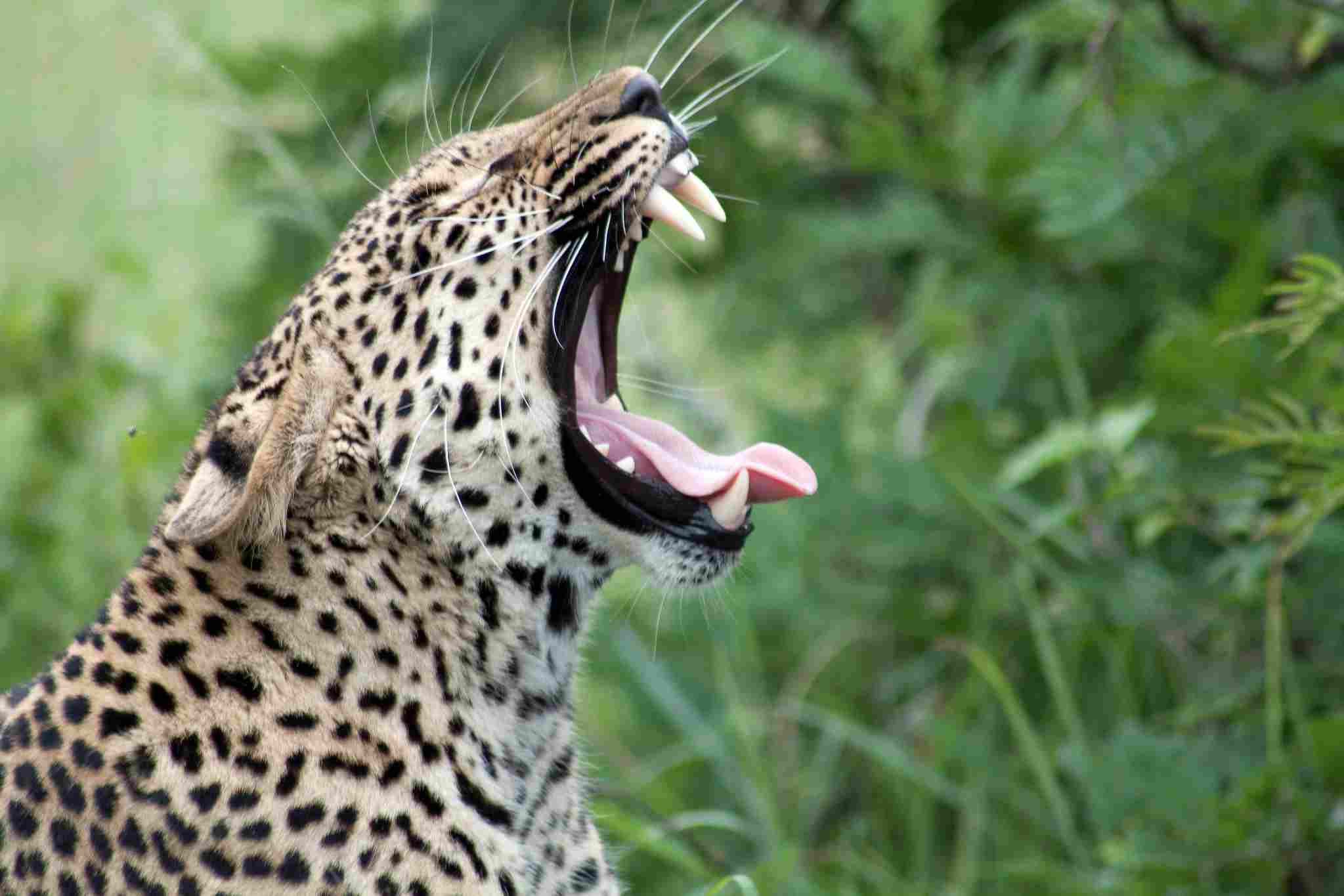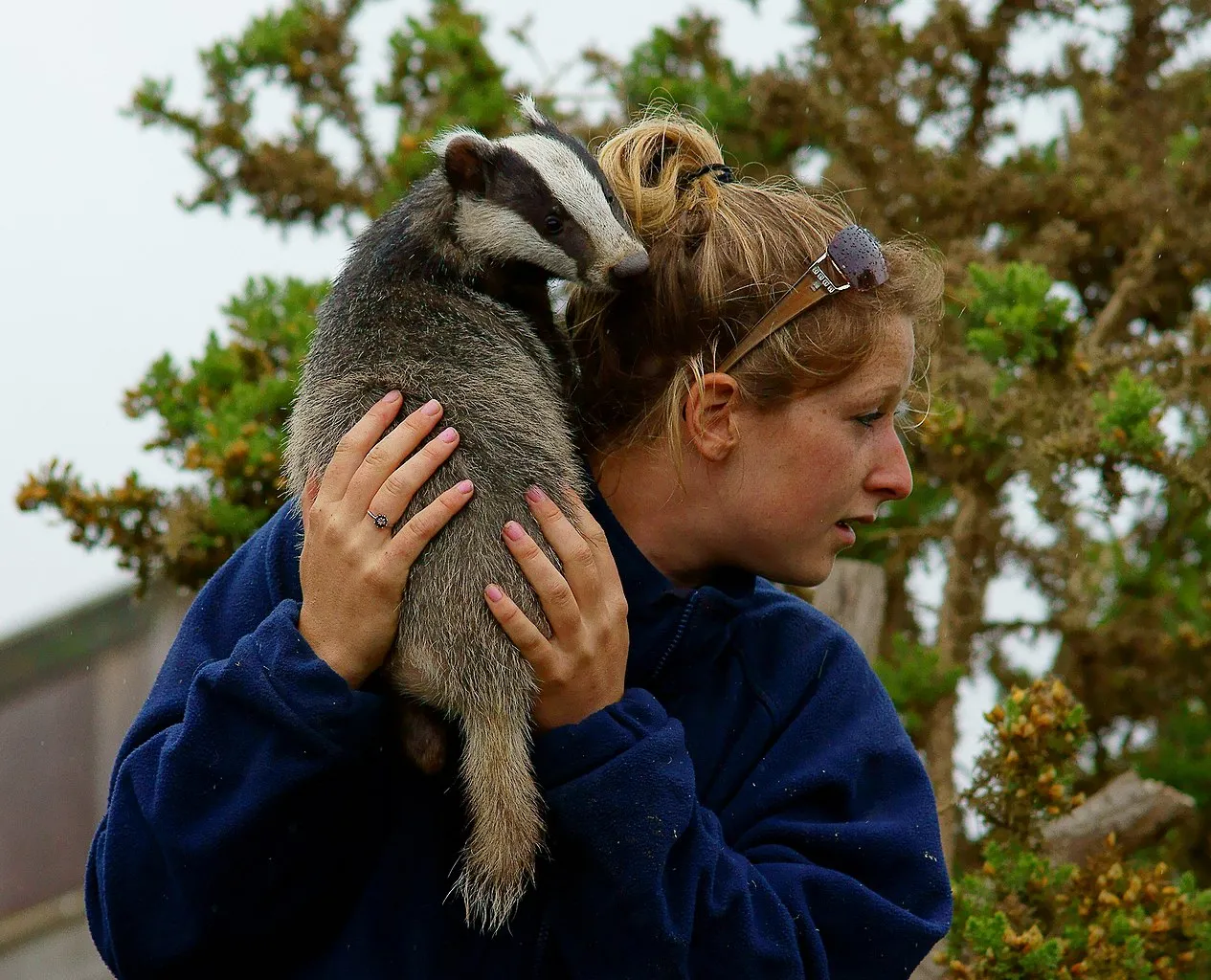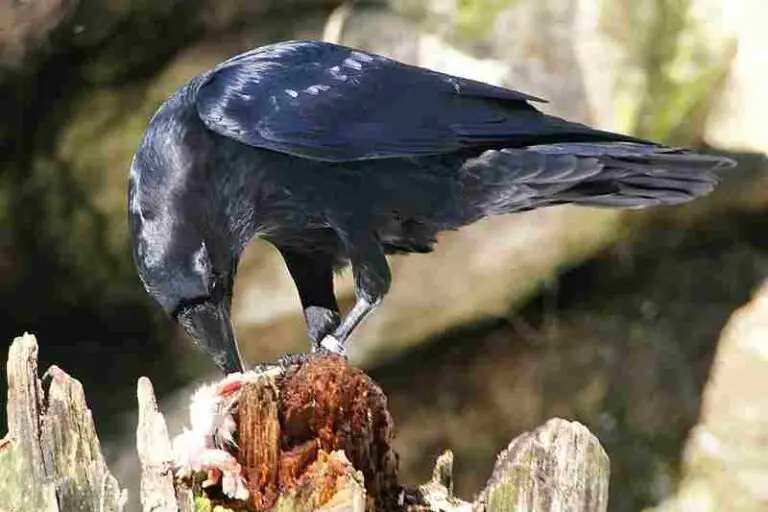Badger Vs Honey Badger Who Would Win, and Overall Comparison
Various members of the Mustelidae family, such as badgers and honey badgers, exhibit distinct characteristics that define their roles in the animal kingdom. Badgers, known for their toughness, and honey badgers, recognized for their aggression, present an intriguing scenario for a hypothetical confrontation. This analysis explores their taxonomy, appearance, size, weight, and aggressiveness to speculate on the potential outcome of a one-on-one clash between these two mustelids.
Badger vs Honey Badger: Who Would Win in a Fight/Physical Confrontation
In a hypothetical one-on-one confrontation between a badger and a honey badger, the honey badger is likely to emerge victorious due to its heavier weight, relative strength, and highly aggressive nature.
I). Weight Advantage:
– Honey badgers, generally heavier than other types of badgers, possess a weight advantage that contributes to their physical dominance. This added mass can enhance the honey badger’s ability to withstand and control the dynamics of a confrontation with a badger of a different type.
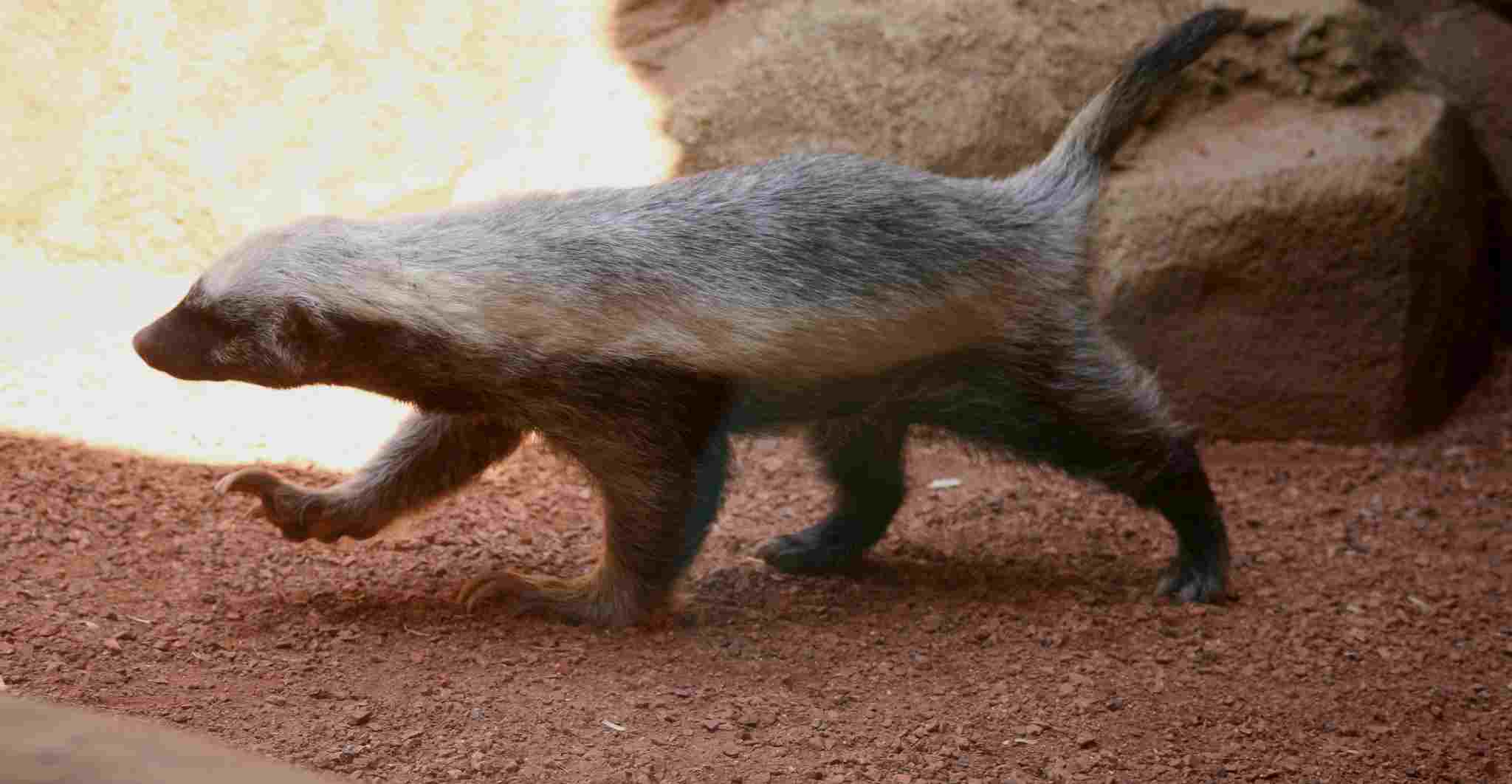
II). Relative Strength:
– While honey badgers may not be significantly larger than other types of badgers, they are known for their relative strength. This strength, when compared to their size, provides honey badgers with the muscle power needed to potentially overpower other badger species in one-on-one confrontations.
III). High Aggressiveness:
– Honey badgers are renowned for their intense aggressiveness, often taking on animals much larger than themselves. In a confrontation with another type of badger, the honey badger’s heightened aggression could be a decisive factor, allowing it to take control of the encounter and subdue its opponent.
IV). Overall Dominance:
– The combination of heavier weight, relative strength, and heightened aggressiveness positions the honey badger for overall dominance in a one-on-one clash with other types of badgers. While different badgers may be tough, the overall traits of the honey badger give it a significant advantage in determining the outcome of a physical confrontation.
*Details of Comparison
| Criteria | Badger | Honey Badger |
| Taxonomy | Mustelidae family; various genera |
Mustelidae family; Genus: Mellivora
|
| Appearance | Stout body, varied fur colors |
Compact body, dark coat
|
| Size | Varies, generally larger |
Generally smaller
|
| Weight | Varies, generally heavier | Relatively lighter |
| Bite Force | Strong jaws, varied strength |
Exceptional bite strength
|
| Offensive Advantages | Jaws and claws; digging capabilities |
Strong jaws, claws, exceptional bite
|
| Defensive Advantages | Clawed, burrow protection |
Loose skin, noxious odor, confrontational
|
| Speed | Agile but not high-speed pursuits |
Surprisingly agile
|
| Agility | Agile in burrows and short bursts |
Climbing abilities
|
| Physical Capacity | Adapted bodies for digging, varied |
Versatile physique
|
| Habitat Preference(s) | Varied habitats |
Adaptable to various environments
|
| Tracks | Varies but often distinctive |
Five toes, prominent claws
|
| Lifespan | Varies, moderate lifespan |
7-10 years in the wild
|
| Mode of Feeding | Omnivorous, digging for prey |
Highly opportunistic, includes honey
|
| Social Behavior | Typically solitary, some group living |
Generally solitary, occasional interaction
|
| Reproduction | Varies, with delayed implantation |
Breeding throughout the year, gestation
|
| Parental Behavior | Varies, with parental care in some |
Females provide care, family unit may stay
|
| Proximity to Human Areas | Can inhabit human areas |
Found near human settlements
|
| Behavior Toward Humans | Generally shy, defensive if threatened |
Fearless, confrontational behavior
|
| Danger Posed to Humans | Rarely pose direct threat |
Can be dangerous if provoked
|
| Precautions | Minimize contact, secure enclosures |
Secure food sources, prevent conflicts
|
| Conservation Status | Varies by species |
Generally Least Concern
|
1. Taxonomy:
Badger:
Kingdom: Animalia
Phylum: Chordata
Class: Mammalia
Order: Carnivora
Family: Mustelidae
Subfamily: Mustelinae
Genus: Meles (Eurasian badger), Taxidea (American badger), Arctonyx (hog badger), Mellivora (ratel, excluding honey badger species), and others based on specific species.
Honey Badger:
Kingdom: Animalia
Phylum: Chordata
Class: Mammalia
Order: Carnivora
Family: Mustelidae
Subfamily: Mustelinae
Genus: Mellivora
Species: Mellivora capensis
While honey badgers belong to the same family (Mustelidae) as other badger species, they are classified under the genus Mellivora, distinguishing them taxonomically from other badger species.
2. Appearance:
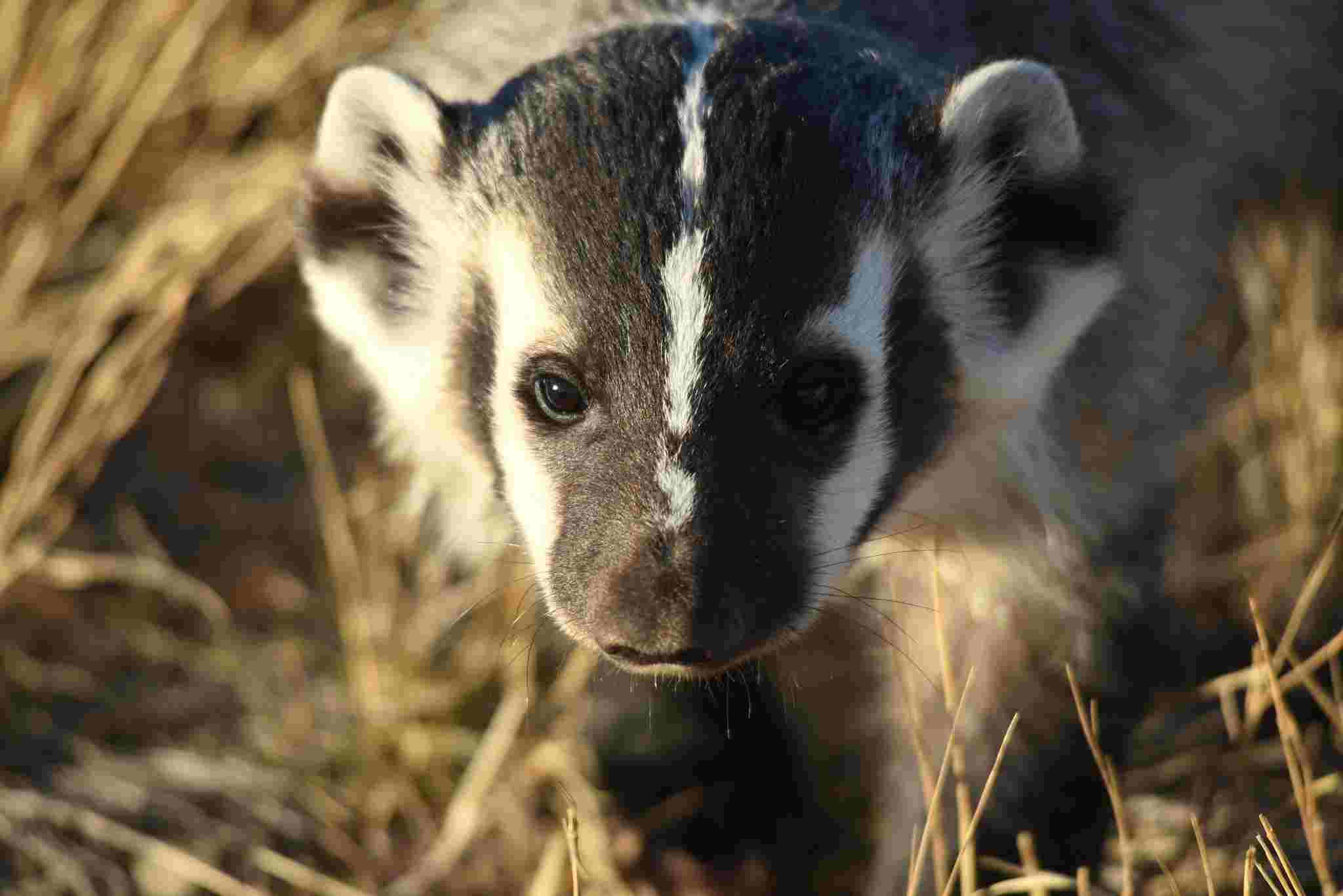
Badger:
Appearance varies among species, generally with a stout body, short legs, and a distinctive elongated head.
Fur coloration ranges from gray to brown, with some species exhibiting facial markings or stripes.
Claws are well-developed for digging.
Honey Badger:
Compact and stocky body with a broad head, small eyes, and powerful jaws.
Characterized by a thick, loose, and coarse coat that is mostly black or dark brown with a lighter dorsal stripe.
Comparison:
Both badgers and honey badgers share a similar body structure but differ in fur color and markings.
Ecological Implications:
The appearance of badgers and honey badgers is adapted to their respective environments, aiding in camouflage or protection against predators. Fur coloration may also play a role in thermoregulation.
3. Size:
Badger:
Size varies among species.
European badgers, for example, have a length of around 23 to 35 inches (58-89 cm) excluding the tail.
Honey Badger:
Typically smaller than some badger species.
Length ranges from 22 to 30 inches (56-76 cm) excluding the tail.
Comparison:
Both badgers and honey badgers exhibit size variations, but honey badgers are generally smaller.
Ecological Implications:
Size can influence resource requirements, hunting strategies, and interactions with other species in the ecosystem.
4. Weight:
Badger:
Weight varies by species.
European badgers weigh between 15 to 30 pounds (7-14 kg).
Honey Badger:
Relatively heavy compared to some badger species.
Weighs between 20 to 35 pounds (9-16 kg).
Comparison:
Honey badgers are relatively heavier than some badger species, while being lighter than others.
Ecological Implications:
Weight affects factors like energy expenditure, prey selection, and competition for resources within their ecological niche.
5. Bite Force:
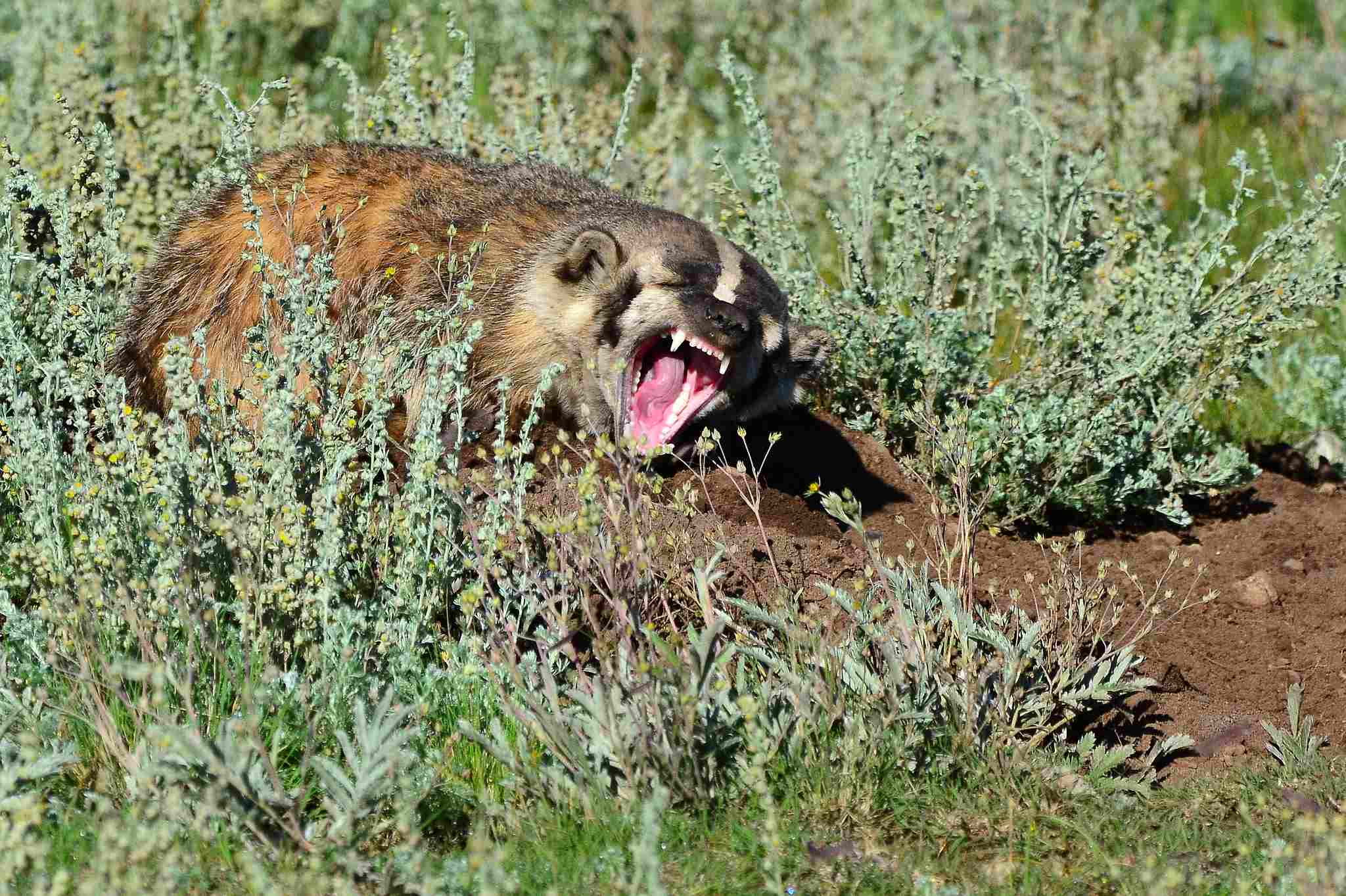
Badger:
Badgers, in general, have strong jaws and sharp teeth.
Bite force varies among species.
Honey Badger:
Possesses an exceptionally strong bite force for its size.
Comparison:
Honey badgers are noted for their remarkable bite force.
Ecological Implications:
Strong bite force aids in hunting and consuming a variety of prey, impacting the honey badger’s role in the ecosystem as a predator.
6. Physical Offensive Advantages:
Badger:
Sharp claws and powerful jaws serve as primary offensive tools.
Digging capabilities are used to unearth prey or create burrows.
Honey Badger:
Extremely strong jaws and a powerful bite, allowing it to tackle and consume a wide range of prey.
Sharp claws for digging and climbing.
Comparison:
Both badgers and honey badgers leverage their jaws and claws for offensive purposes, but honey badgers are notable for their exceptional bite strength.
Ecological Implications:
Offensive adaptations contribute to the badgers’ success as predators, shaping their roles in controlling prey populations and influencing ecosystem dynamics.
7. Physical Defensive Advantages:
Badger:
Well-developed claws and a stocky build provide some defensive capabilities.
Can use their burrows for protection.
Honey Badger:
Thick, loose skin that allows it to twist and turn freely when grasped by a predator.
A fearless demeanor and the ability to release a foul-smelling odor from specialized anal glands as a defensive mechanism.
Comparison:
While both badgers and honey badgers have physical defenses, honey badgers exhibit unique adaptations such as loose skin and the ability to release noxious odors.
Ecological Implications:
Defensive adaptations contribute to the badgers’ survival against predators and play a role in maintaining balance within ecosystems.
8. Speed:
Badger:
Generally not known for high-speed pursuits.
Agile but adapted for short bursts of speed.
Honey Badger:
Surprisingly agile and capable of relatively high-speed movements.
Comparison:
Honey badgers are known for their agility and speed compared to most badger species.
Ecological Implications:
Speed influences hunting strategies, evasion of predators, and overall mobility within their ecological niche.
9. Agility:
Badger:
Agile in navigating through burrows and tunnels.
Can move quickly in short bursts.
Honey Badger:
Highly agile with the ability to climb trees and navigate various terrains.
Comparison:
Both badgers and honey badgers exhibit agility, but honey badgers are noted for their exceptional climbing abilities.
Ecological Implications:
Agility enhances their ability to access different habitats and food sources, influencing their roles within ecosystems.
10. Overall Physical Capacity:
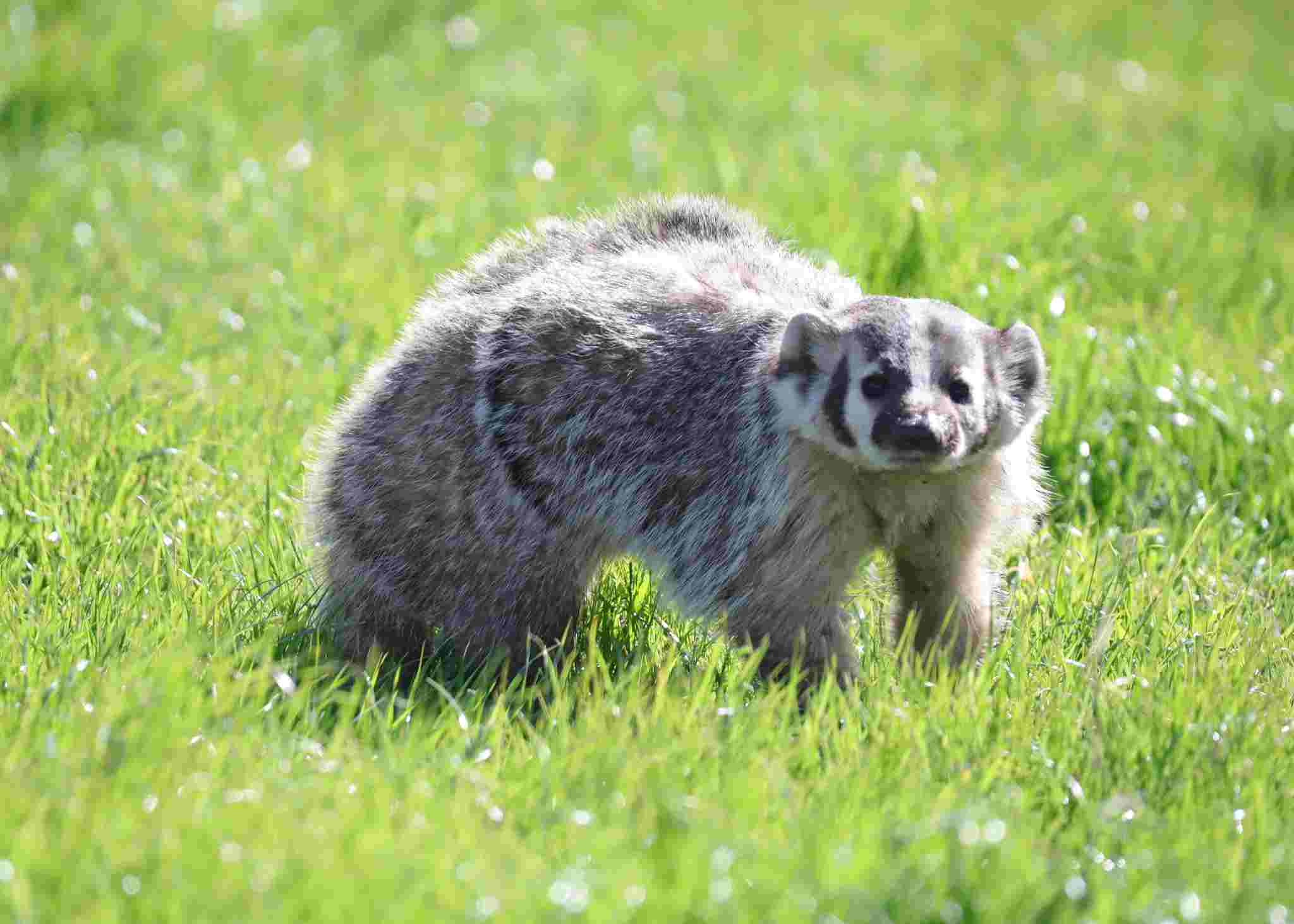
Badger:
Possesses a robust and well-adapted body for digging and burrow construction.
Varied physical capacities based on species; generally adapted for a semi-aquatic or terrestrial lifestyle.
Honey Badger:
Exhibits a versatile and powerful physique, combining strength, agility, and endurance.
Well-suited for a terrestrial lifestyle with climbing capabilities.
Comparison:
Both badgers and honey badgers possess physical adaptations that suit their respective ecological niches, but honey badgers are often noted for their versatility.
Ecological Implications:
Physical capacities contribute to the ecological roles of badgers and honey badgers, affecting their ability to exploit resources and interact with other species in their habitats.
11. Habitat Preference(s):
Badger:
Habitat preferences vary among species, including woodlands, grasslands, and deserts.
Often associated with areas suitable for digging burrows.
Honey Badger:
Found in a range of habitats, including savannas, grasslands, and forests.
Adaptable to different environments but commonly associated with arid regions.
Comparison:
Both badgers and honey badgers exhibit adaptability to various habitats.
Ecological Implications:
Habitat preferences influence their impact on local ecosystems and their interactions with other species.
12. Tracks:
Badger:
Tracks vary among species but often show distinctive claw marks and a waddling gait.
Hind feet usually have five toes, while front feet may have four or five toes.
Honey Badger:
Tracks exhibit five toes with prominent claw marks.
Hind feet are larger than front feet.
Comparison:
Both badgers and honey badgers leave tracks with distinctive features.
Ecological Implications:
Tracking can be used for ecological studies, population monitoring, and understanding the distribution of these species within their habitats.
13. Lifespan:
Badger:
Lifespan varies among species but generally ranges from 2 to 14 years in the wild.
Honey Badger:
Estimated lifespan in the wild is around 7 to 10 years.
Comparison:
Lifespan varies, but honey badgers generally have a moderate lifespan compared to some badger species.
Ecological Implications:
Lifespan influences population dynamics and ecological roles, including reproductive strategies and interactions with other species.
14. Mode of Feeding:
Badger:
Omnivorous diet includes small mammals, insects, fruits, and vegetation.
Hunting techniques often involve digging to access burrows of prey.
Honey Badger:
Highly opportunistic and omnivorous, feeding on a wide range of prey such as small mammals, birds, reptiles, and even honey.
Capable of raiding beehives for honey, showcasing a unique behavior not observed in many other badger species.
Comparison:
Both badgers and honey badgers share an omnivorous diet, but honey badgers are notable for their specialized honey-feeding behavior.
Ecological Implications:
Feeding habits influence the badgers’ roles in controlling prey populations and affect the distribution of other species within their ecosystems.
15. Social Behavior:
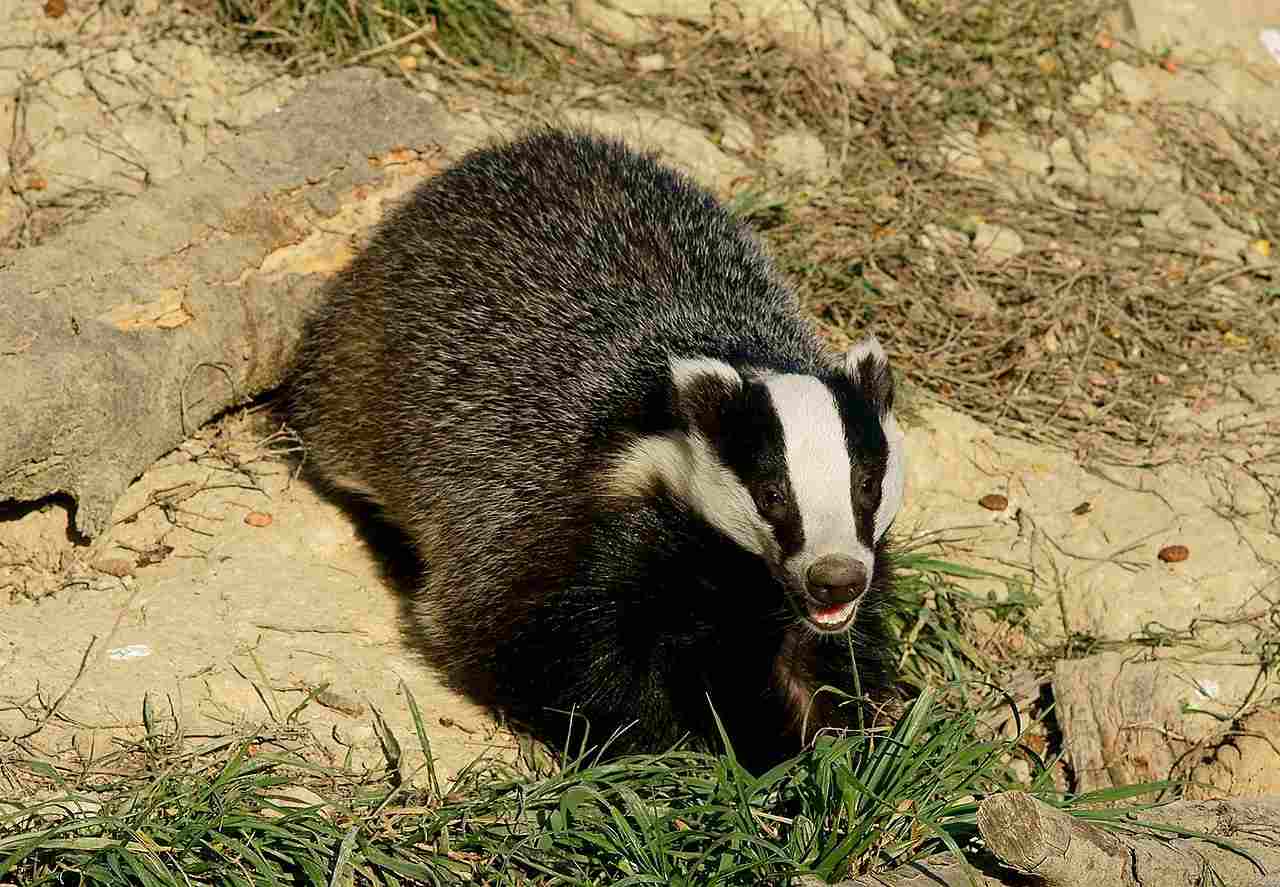
Badger:
Typically solitary, but some species may form family groups or share a territory.
Social structure varies among species.
Honey Badger:
Generally solitary, but interactions can occur during mating or between mothers and offspring.
Displays a more solitary behavior compared to some badger species.
Comparison:
Both badgers and honey badgers exhibit varying degrees of social behavior, often influenced by species-specific characteristics.
Ecological Implications:
Social behavior impacts the dynamics of populations and can influence territoriality, competition for resources, and reproductive strategies.
16. Mode of Reproduction:
Badger:
Reproductive strategies vary among species, with some badgers exhibiting delayed implantation.
Mating usually occurs in late summer or early autumn.
Honey Badger:
Breeding can occur throughout the year.
Gestation period is around 6 months, and females give birth to a small litter of cubs.
Comparison:
Reproductive strategies vary, but honey badgers have a more flexible breeding pattern.
Ecological Implications:
Reproductive strategies influence population dynamics and may impact the availability of prey within ecosystems.
17. Parental Behavior:
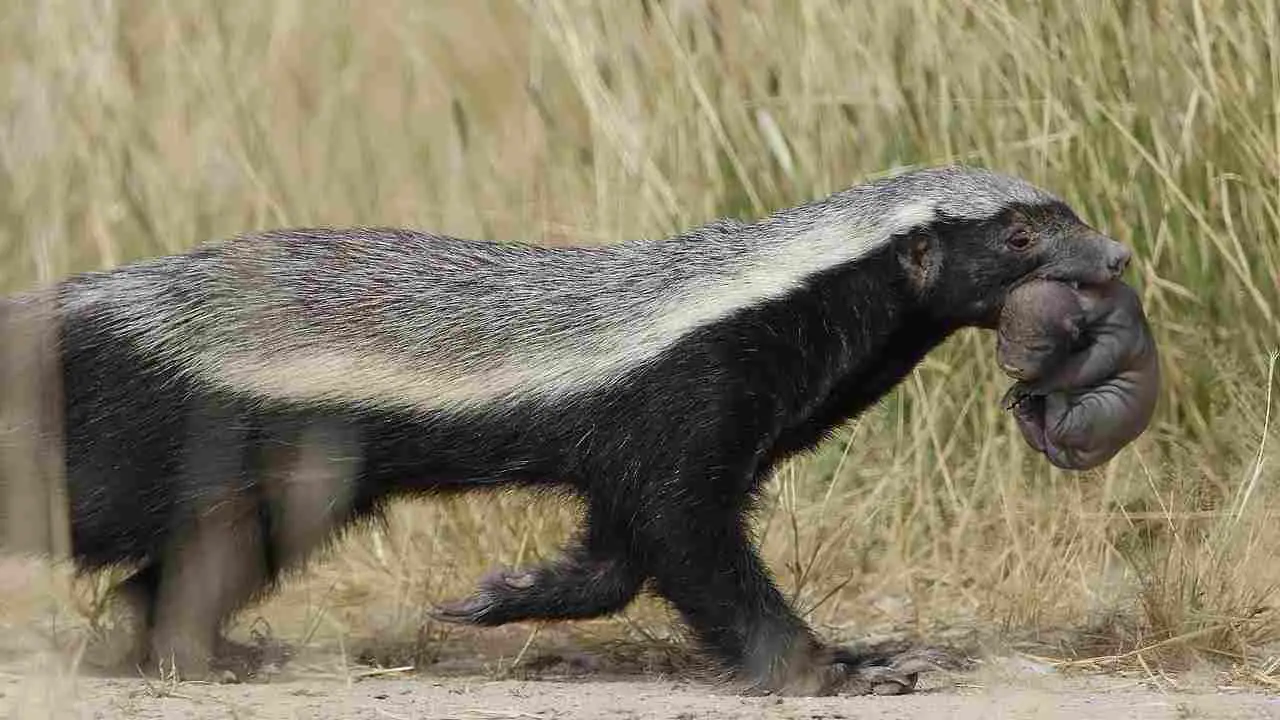
Badger:
Parental care varies among species, with some badgers providing care to their offspring.
Cubs are raised in burrows.
Honey Badger:
Females provide care to their offspring, and the family unit may stay together for several months.
Cubs are vulnerable and rely on their mother for protection and food.
Comparison:
Both badgers and honey badgers exhibit varying degrees of parental care.
Ecological Implications:
Parental behavior influences the survival and growth of offspring, impacting population dynamics within ecosystems.
18. Proximity to Human-Inhabited Areas:
Badger:
Some badger species may inhabit areas close to human settlements, including suburban and rural environments.
Interactions with humans can lead to conflicts, especially in areas where badgers may cause damage to gardens or property.
Honey Badger:
Found in a variety of habitats, including areas close to human settlements.
Known for their adaptability and ability to thrive in environments altered by human activities.
Comparison:
Both badgers and honey badgers can be found in proximity to human-inhabited areas, leading to potential interactions and conflicts.
Ecological Implications:
Human-badger interactions can impact the behavior and distribution of these species, influencing their roles in the ecosystem.
19. Behavior Toward Humans:
Badger:
Typically shy and elusive, avoiding direct contact with humans.
May display defensive behavior if cornered or threatened.
Honey Badger:
Known for their fearless and aggressive behavior, even towards larger animals.
Will confront and stand their ground in the face of potential threats.
Comparison:
While badgers are generally shy, honey badgers are renowned for their bold and confrontational behavior towards humans.
Ecological Implications:
Behavior towards humans can affect the perception of these species and may influence human-wildlife conflicts.
20. Danger Posed to Humans:
Badger:
Rarely pose a direct threat to humans.
Defensive behavior may include biting if cornered, but they typically avoid confrontation.
Honey Badger:
Can be dangerous when cornered or provoked.
Possesses powerful jaws and defensive mechanisms, making them capable of causing harm to humans.
Comparison:
While both badgers and honey badgers generally avoid humans, honey badgers can be more aggressive and pose a higher potential danger.
Ecological Implications:
The perceived danger posed by these animals can influence human attitudes and actions, impacting conservation efforts.
21. Associated Precautions:
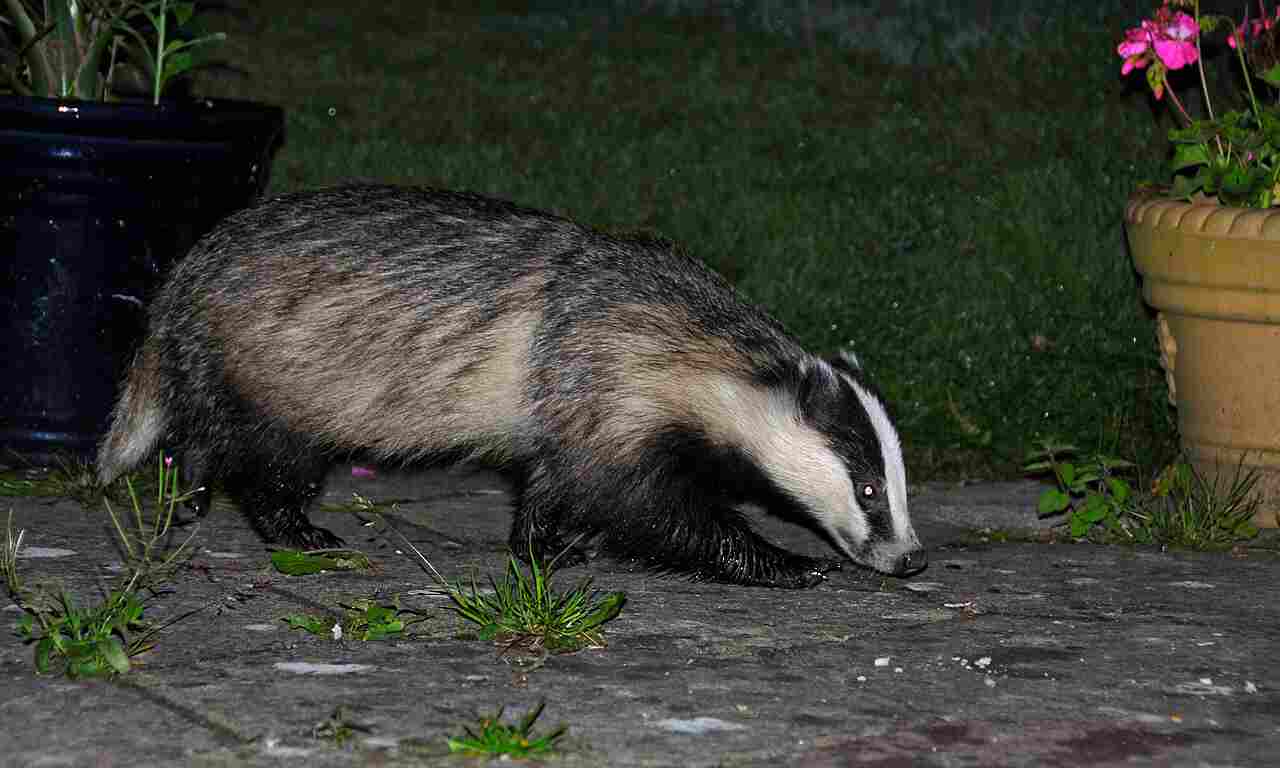
Badger:
Generally, precautions involve avoiding direct contact and providing secure enclosures in areas where badgers may cause conflicts.
Honey Badger:
Precautions may include securing food sources, avoiding confrontations, and implementing measures to prevent property damage in areas with honey badger presence.
Comparison:
Precautions for both badgers and honey badgers involve minimizing interactions and addressing potential conflicts.
Ecological Implications:
Implementing precautions helps mitigate negative interactions, promoting coexistence between humans and these wildlife species.
22. Conservation Status:
Badger:
Conservation status varies among species.
Some badger species are listed as Least Concern, while others, such as the European badger, may face localized threats or declining populations.
Honey Badger:
Generally listed as Least Concern, indicating a relatively stable population.
Adaptability to various environments and the absence of widespread threats contribute to their favorable conservation status.
Comparison:
While some badger species may face conservation concerns, honey badgers are generally considered to be in a more stable state.
Ecological Implications:
Conservation status reflects the health of populations and can indicate potential ecological imbalances or the need for conservation efforts.
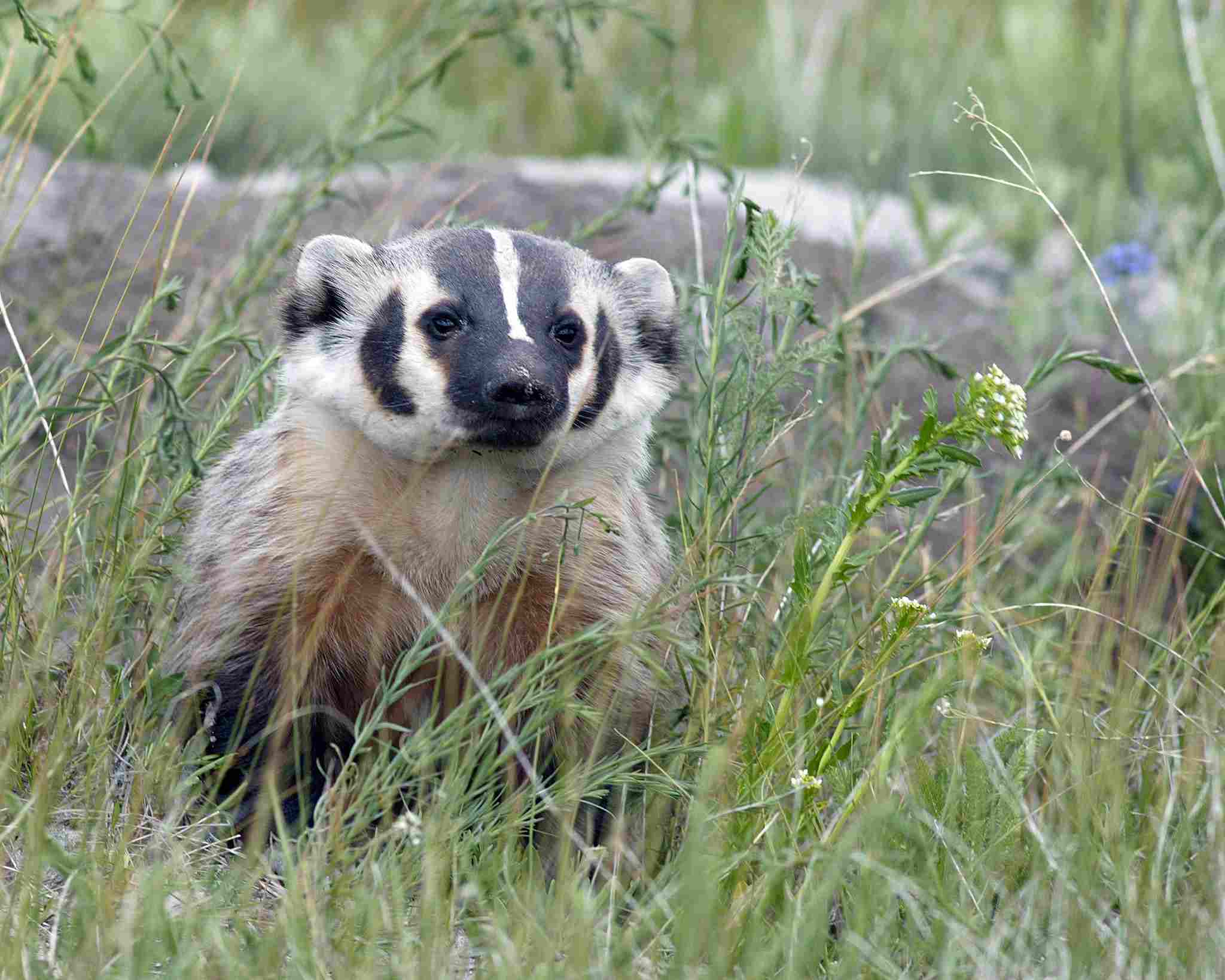
Summary of Comparison: Badger vs. Honey Badger
1. Taxonomy:
Both belong to the Mustelidae family, but honey badgers are classified under the genus Mellivora.
2. Appearance:
Similar body structure; honey badgers have a distinct dark coat.
3. Size:
Honey badgers are generally smaller than some badger species.
4. Weight:
Honey badgers are heavier than many badger species, although also lighter than some species.
5. Bite Force:
Honey badgers are noted for exceptional bite strength.
6. Physical Offensive Advantages:
Both use strong jaws and claws; honey badgers have a notable bite force.
7. Physical Defensive Advantages:
Honey badgers have loose skin and release noxious odors as unique defenses.
8. Speed:
Honey badgers are surprisingly agile and capable of relatively high-speed movements.
9. Agility:
Both exhibit agility, but honey badgers are known for climbing abilities.
10. Overall Physical Capacity:
Both possess adapted bodies; honey badgers are noted for versatility.
11. Habitat Preference(s):
Both are adaptable to various habitats.
12. Tracks:
Both leave distinctive tracks.
13. Lifespan:
Lifespan varies, with honey badgers generally having a moderate lifespan.
14. Mode of Feeding:
Both are omnivorous; honey badgers have unique honey-feeding behavior.
15. Social Behavior:
Varying degrees of social behavior observed in both.
16. Mode of Reproduction:
Reproductive strategies vary, with honey badgers having a more flexible breeding pattern.
17. Parental Behavior:
Varying degrees of parental care in both.
18. Proximity to Human-Inhabited Areas:
Both can be found in areas near human settlements.
19. Behavior Toward Humans:
Badgers are generally shy; honey badgers are known for confrontational behavior.
20. Danger Posed to Humans:
While both avoid humans, honey badgers can be more aggressive.
21. Associated Precautions:
Precautions involve minimizing interactions and addressing potential conflicts for both.
22. Conservation Status:
Conservation statuses vary; honey badgers are generally considered Least Concern.
Conclusion:
I). Similarities:
Both badgers and honey badgers belong to the family Mustelidae, sharing common ancestry.
They exhibit omnivorous diets, with adaptations for digging and hunting.
II). Differences:
Honey badgers are smaller and lighter than some badger species.
Unique features of honey badgers include their specialized honey-feeding behavior, fearless demeanor, and confrontational approach towards threats.
Conservation statuses vary, with honey badgers generally considered to be in a more stable condition than certain badger species.

